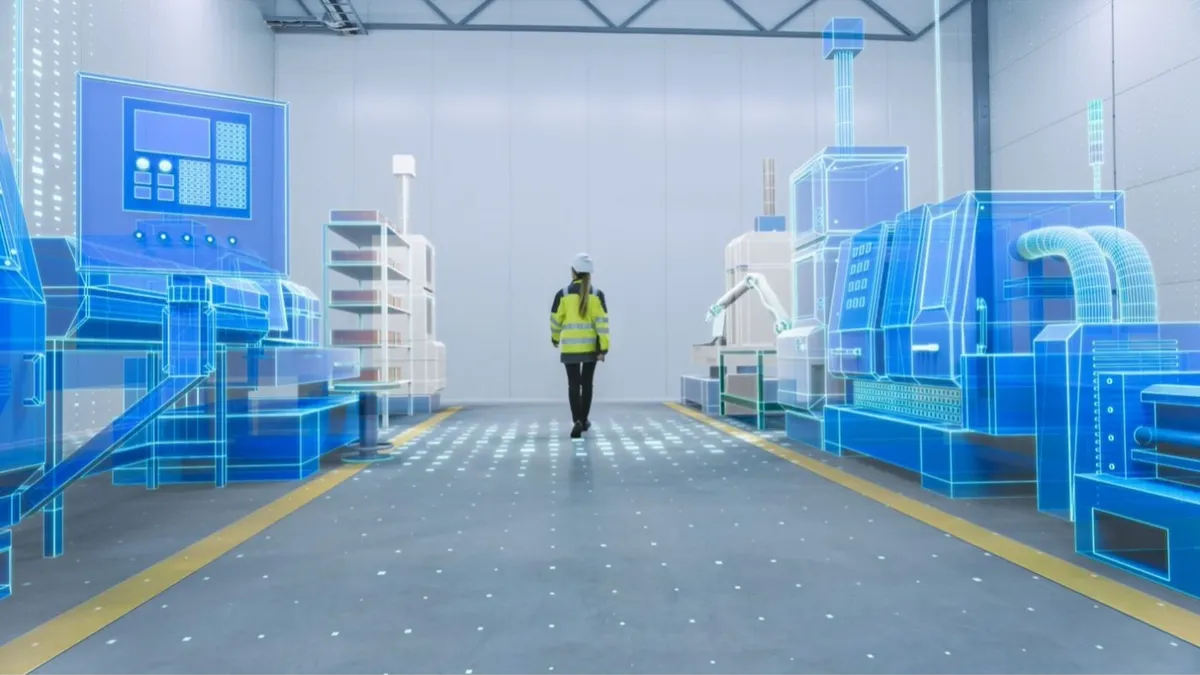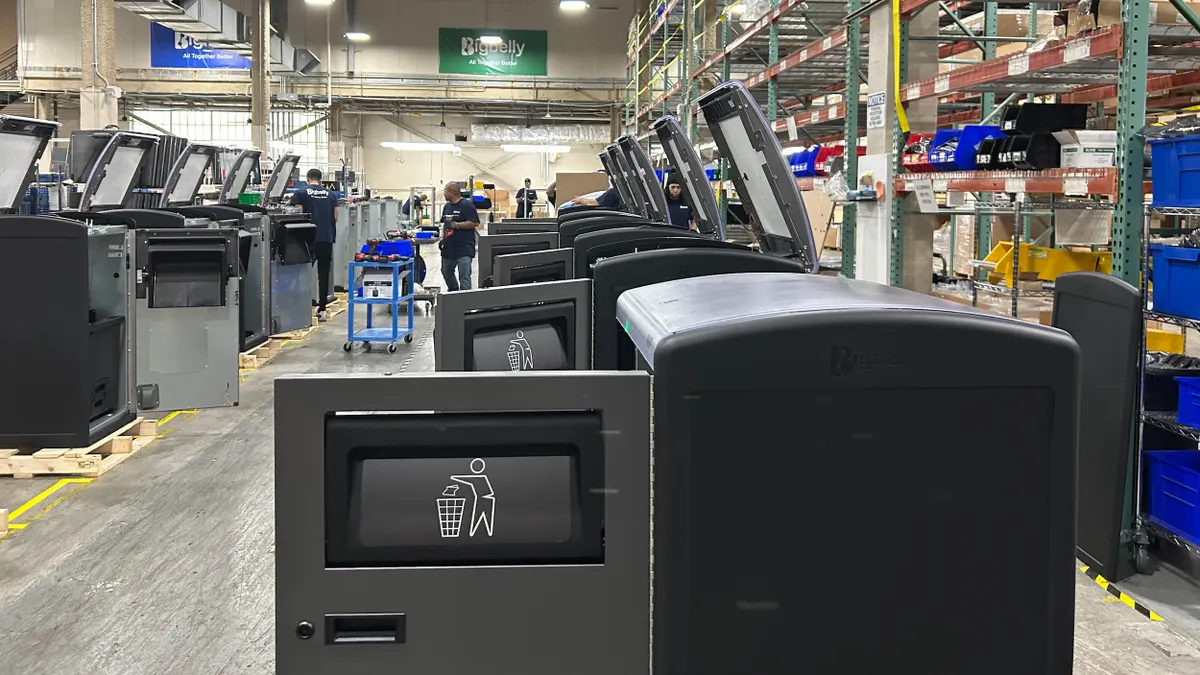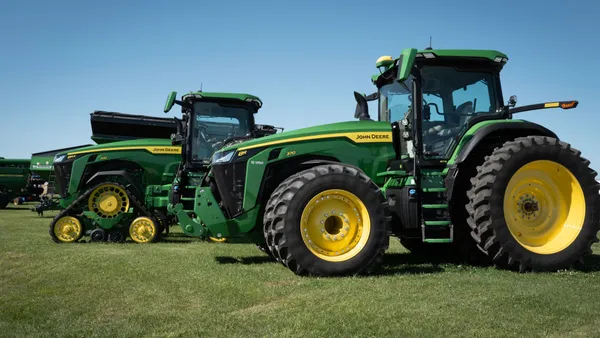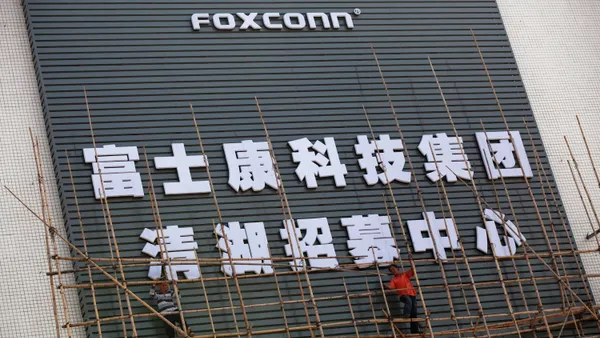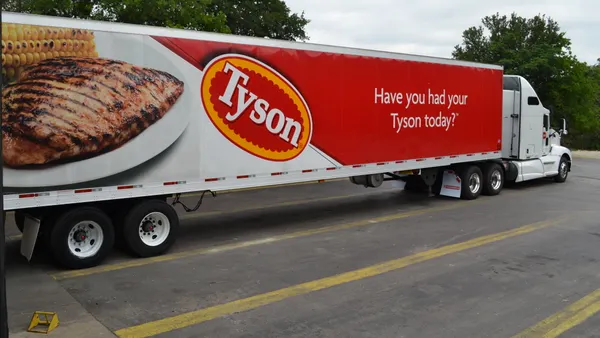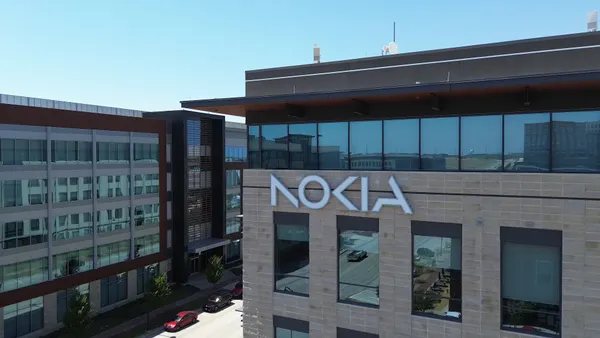Human history is defined by its revolutions, seismic shifts in how we live, work and produce. From the Agricultural Revolution to the Industrial Revolution and most recently, the Digital Revolution, each era fundamentally redefined productivity and prosperity.
But we stand on the edge of something even more transformative: The Autonomous Age. This new age isn’t just a continuation of digitization. It’s a convergence of AI, data, connectivity and automation, ushering in an era where operations become intelligent, adaptive and self-sustaining.
Machines no longer simply execute; they anticipate, learn and act independently.
And although we are only at the beginning, this revolution will move faster and cut deeper than any that came before it.
Skeptics may say, “We don’t see fully autonomous factories or distribution centers today.” They’re not wrong. Most operations remain largely human-dependent. But look closer: autonomous behavior is emerging in pockets, use cases and discrete operational steps in maintenance, inspection, routing, simulation and more.
Remember how quickly AI and Large Language Models (LLMs) like ChatGPT changed our personal and professional lives? In less than two years, entire industries have reimagined how they work. How people draft emails, generate code and model strategies have all evolved.
Why would industrial operations be immune to this disruption?
If you believe AI won’t transform the way we design, create, make and move products, you’re already behind.
The Rise of The Autonomous Age
The Autonomous Age is not defined by a single breakthrough; it’s defined by integration. What makes it powerful is the synergy of data, technologies, people and artificial intelligence working together in service of strategic outcomes.
Operating Systems are now starting to learn from multivariate input in real time, simulating thousands of operational scenarios before making a change and adapting and reconfiguring on their own without requiring a human in the loop.
This isn’t automation. This is orchestration without a conductor.
Enterprises that adopt this paradigm are seeing their time-to-value reduced by half, OEE improved by double digits and failure rates starting to approach zero.
The question is no longer whether autonomy is possible, but rather where to begin, how to identify use cases that provide substantial value and the speed at which it can be scaled.
Technology Convergence Redefining Industry
The Autonomous Age is powered by the convergence of maturing technologies, each reinforcing the other:
- Artificial Intelligence & Machine Learning optimize decisions at every level.
- Cloud & Edge Computing enable latency-free intelligence at the point of action.
- 5G & Private Networks connect every machine, sensor and system in real time.
- Digital twins simulate, validate and optimize complex environments before physical deployment.
- Cybersecurity frameworks guard this increasingly connected ecosystem.
This convergence doesn’t just improve efficiency, it reshapes operating models. Companies can now build factories that think, supply chains that heal and product designs that respond to real-time signals from the market and the shop floor.
Intelligence in Action: Case Examples in Autonomy
Generative design, simulation and AI-driven validation are radically accelerating product development cycles. AI can now suggest optimal geometries for structural integrity, analyze product failure risks using real-world data and simulate regulatory compliance, all before a physical prototype exists.
Beyond R&D, design data is now integrated with supply chain and manufacturing systems. When materials become scarce or supplier constraints change, designs can be adjusted proactively, making the entire lifecycle smarter and more agile.
Factories are now modeled virtually—layout, flow, automation, logic, even human ergonomics—before a single brick is laid. Entire lines are virtually commissioned, with control code and operator training validated pre-startup. These digital twins act as insurance policies for companies investing hundreds of millions of dollars in new greenfield facilities. By simulating operations before construction begins, they help identify design flaws that could derail efficiency or performance.
Moreover, a fully functional virtual representation of the facility enables companies to simulate, emulate and optimize operations after start-up. This capability extends further, allowing businesses to virtually test and launch new products or enhancements to the production line, ensuring seamless integration and minimized risk once operational.
Cameras equipped with infrared, hyperspectral and thermal lenses now detect defects invisible to the human eye—while also adjusting robotic sprayers, torque arms and even cutting tools mid-process. These aren’t pilot projects.They’re operating at scale in high-volume manufacturing today.
AI-powered machine vision has evolved far beyond traditional vision systems that simply capture and display images. Today, it represents a transformative leap in operational intelligence.
Companies are closing the loop between computer vision and autonomous operations, enabling systems to not only "see" but also to "act."
Through advanced training of AI models with computer vision, these systems can dynamically identify anomalies and patterns within production processes that would typically go unnoticed by human inspectors or conventional vision technologies. But it doesn’t stop at detection.
The true innovation lies in the system's ability to respond autonomously. Based on real-time visual analysis, AI can adjust set points—such as temperature, pressure, or alignment—and direct the control systems running the operation to optimize performance.
This real-time feedback loop ensures continuous improvement in not only product quality but also operational efficiency. By incorporating machine vision with autonomous control, companies are achieving tighter tolerances, reducing energy consumption and enhancing overall throughput—all without manual intervention. These systems are becoming integral to modern factories, redefining the boundaries of what automation can accomplish.
Data from sensors on motors, valves and actuators is analyzed in real time to predict wear and optimize service schedules. Instead of unplanned downtime, maintenance becomes a proactive, just-in-time function that saves millions annually.
Many believe that achieving this level of predictive maintenance requires sensorizing every piece of equipment or overhauling existing systems entirely. However, advancements in technology have made such extensive upgrades unnecessary. Solutions like Rockwell Automation’s Guardian AI demonstrate how existing operations can harness indicator signals—such as pump flow rates, energy consumption, or other operational signatures—to achieve predictive insights without full-scale sensor implementation.
AI solutions can leverage these unique data signatures, extracting meaningful patterns from operational information that is already available. By analyzing these signals, it can predict potential failures, automatically generate maintenance work orders in your Computerized Maintenance Management System (CMMS) and proactively schedule repairs during planned downtimes.
This approach not only reduces costs and complexity but also ensures that businesses can transition to smarter maintenance strategies without disrupting their current infrastructure. Such innovations are transforming predictive maintenance into an accessible reality for operations of all scales, proving that cutting-edge solutions don’t always demand a complete technological overhaul.
Autonomous Mobile Robots (AMRs) & Cobots
The integration of autonomous material handling devices and collaborative robots (cobots) is not only enhancing efficiency but also providing critical solutions to address workforce labor and skills shortages. As industries face increasing challenges in finding skilled workers, these advancements are stepping in to fill gaps in areas where human labor is scarce or impractical.
Cobots, equipped with advanced sensors and AI, are revolutionizing tasks in packaging, inspection and assembly, ensuring precision and reliability even in high-demand environments. Their ability to work safely alongside humans has transformed the factory floor, creating opportunities for human operators to focus on supervisory and quality assurance roles rather than repetitive, labor-intensive tasks. This shift not only mitigates the impact of labor shortages but also opens the door for upskilling, as employees transition to roles requiring higher levels of expertise.
Moreover, autonomous robots are addressing jobs deemed too dangerous or physically taxing for humans. Tasks such as handling hazardous materials, operating in extreme temperatures, or navigating confined spaces are now being managed by robots, significantly reducing safety risks and improving overall workplace conditions. This capability is particularly impactful in industries like manufacturing, mining and chemical processing, where worker protection is paramount.
By leveraging autonomous robots and cobots, companies are not only maintaining operational continuity but are also redefining workforce dynamics. These technologies enable businesses to sustain productivity during periods of labor scarcity, while simultaneously fostering an environment where human workers can thrive in more strategic and intellectually engaging roles. In doing so, they are bridging the gap between human and mechanical collaboration, proving that automation is not a replacement for human ingenuity but a complement to it.
True autonomy begins with process control. Imagine a distillation column, extrusion line, or fermentation tank where AI continuously balances hundreds of variables; pressure, temperature, flow rate, raw material variability, to achieve optimal throughput, quality and energy consumption without manual intervention.
These AI-based controllers adapt in real time, even as conditions change, leading to better yields, energy savings and tighter quality control. In many cases, this has shifted process engineers into supervisory and optimization roles, overseeing fleets of self-governing assets.
Intelligent Supply Chain Planning
AI models now predict demand fluctuations, inventory bottlenecks and supplier risks; often weeks before traditional planning tools would detect them.
But the real power comes from integration. These insights feed back into product development and sourcing strategies. For example:
- A product redesign could use more abundant components.
- A supplier shift could trigger automated rerouting of materials.
Supply chains are becoming living systems—learning, adjusting and optimizing in real time.
Activating and Monetizing Data Across the Enterprise
Most manufacturers still struggle to make use of their data. Why? Because it lives in silos: MES, ERP, PLM, LIMS—all speaking different “languages.”
AI is finally breaking down these walls.
Think of unified data like Rosetta Stone, translating disparate formats and structures into a shared semantic layer. For example:
- OT tags measuring “temp_123” and “psi_07” can now be linked to IT records like work orders or quality holds.
- Operators no longer need a Controls Engineer to explain what sensor data means, it’s contextualized automatically.
This unlocks new insights: how raw material variance impacts yield, how operator behavior affects downtime and which production runs correlate to returns.
The result? Smarter decisions, faster.
Cybersecurity: From IT Afterthought to OT Imperative
In the Autonomous Age, cybersecurity isn’t just a compliance item. It’s a strategic necessity.
Operational environments often running legacy systems are now exposed through increased connectivity.
Many manufacturers don’t even know:
- What assets they have
- Whether those assets are patched or supported
- What vulnerabilities exist across sites, vendors and firmware versions
As geopolitical tensions rise and ransomware becomes industrial-scale warfare, the question is no longer if your plant will be attacked. The question is when and how bad the damage will be.
Leading companies are investing and strengthening their cybersecurity strategy, capabilities and governance models to align to the NIST cybersecurity framework:
- Identify: What assets and vulnerabilities exist?
- Protect: What controls are in place?
- Detect: Are you monitoring for anomalies in real time?
- Respond: Is there a playbook?
- Recover: Can you bounce back and learn?
Cybersecurity must evolve into a cross-functional, board-level priority, embedded into every system, process and capital project.
Are You Ready for the Autonomous Age?
Pause, reflect and be honest with yourself.
Ask yourself:
- Does my company have a coordinated, well-defined autonomy strategy?
- Is there a clear plan and roadmap and am I building new capabilities systematically, or chasing shiny pilots?
- Has this plan been socialized across leadership and the front line?
- Are the roadmap’s investments aligned to real ROI and am I tracking the ROI to confirm you are getting the value that you expect?
- Can my people lead this transformation, or are they already overwhelmed?
- Am I still celebrating isolated innovation where someone builta cool new AI tool, but that tool doesn’t scale to bring value across the organization?
Pilot purgatory is real. Many companies try a dozen proof-of-concepts only to find themselves further siloed, misaligned and unsure of what’s truly scalable.
Surviving the Autonomous Age demands more than vision. It requires disciplined execution, organizational alignment and relentless value creation and tracking.
Getting Started: Charting a Path to Success
If you’ve answered "no" to any of the critical questions above, this is a clear indicator that your company might not be on the path to successfully realizing the full value from its autonomous journey. But there’s no need to let uncertainty derail progress. Taking deliberate, focused steps now can make all the difference.
Start by embracing clarity and structure. A well-defined roadmap, grounded in value realization and return on investment (ROI), is essential to guide your efforts. This roadmap should prioritize investments that deliver measurable outcomes and ensure scalability across the organization, rather than chasing isolated innovations that fail to align with broader goals.
Our Digital Value Accelerator service is designed to help companies get on the right track. With this service, we work closely with organizations to:
- Identify gaps in strategy and execution.
- Develop a comprehensive roadmap tailored to their specific goals.
- Socialize the strategy across leadership and operational teams to ensure alignment.
- Track and measure ROI to confirm that every initiative drives tangible value.
- Equip teams with the tools and mindset needed to lead this transformation effectively.
By leveraging the Digital Value Accelerator, companies gain the focus and discipline required to thrive in the Autonomous Age. It’s not just about building capabilities—it’s about building the right capabilities systematically, at scale and with measurable impact. With the right strategy, the autonomous journey transforms from a series of disconnected pilots into a unified, value-driven transformation that reshapes how industries work and innovate.
Lead or Be Left Behind
This is the defining industrial shift of our era.
Those who lead will reshape their industries and set the standards of the future. Those who lag will find themselves disrupted by faster, leaner, more intelligent competitors who didn’t wait for consensus or certainty.

